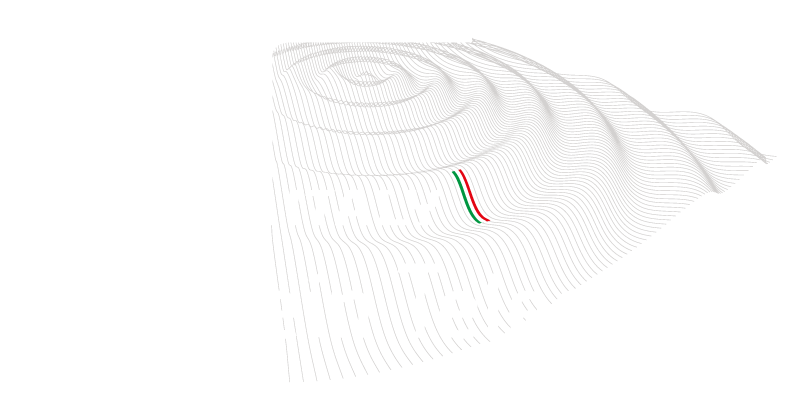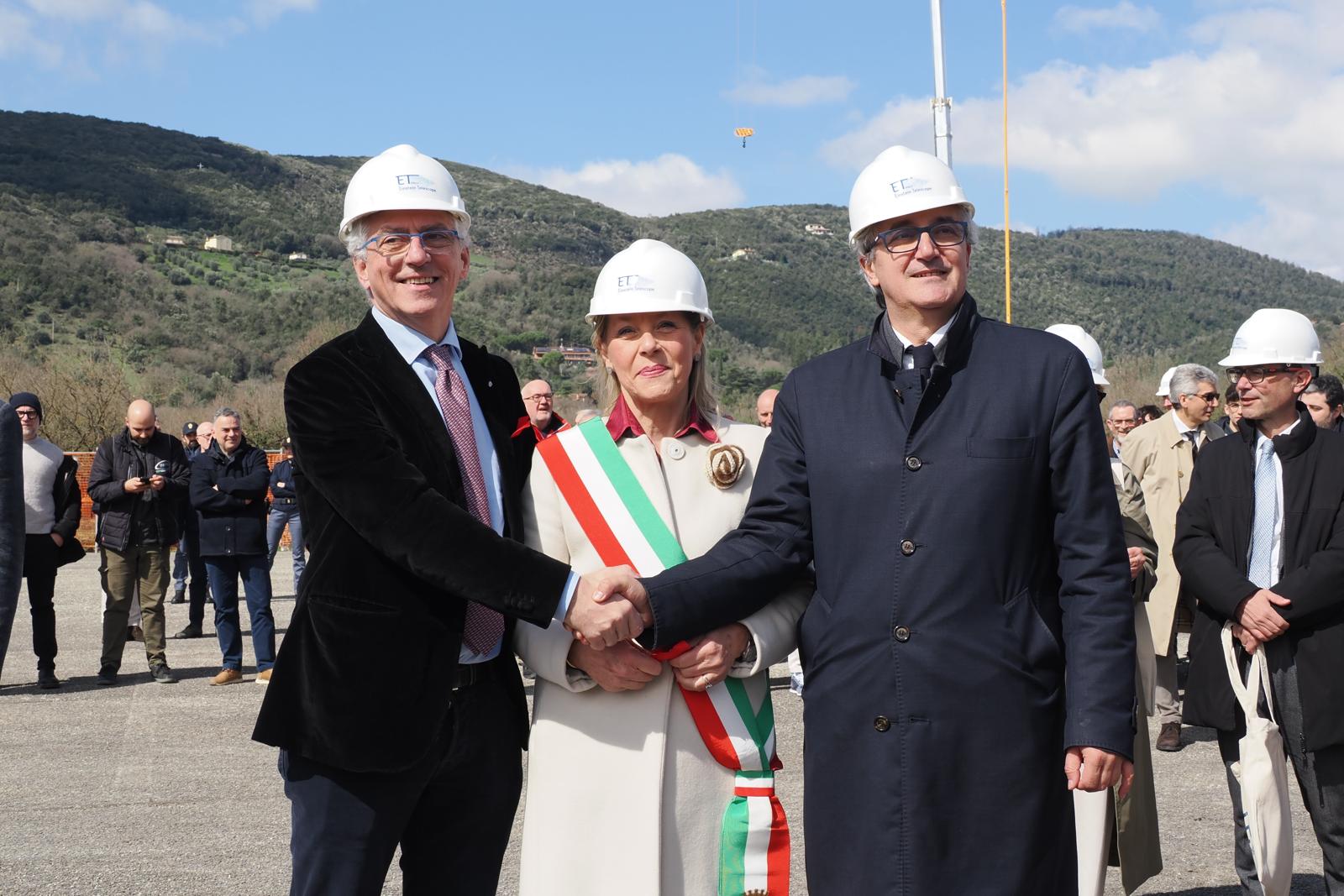The first prototype, at a scale of ten meters, of one of the arms of the third-generation gravitational wave detector Einstein Telescope will be realized in Perugia, at the future International Laboratory CAOS (Center for Applications on Gravitational Waves and Seismology), for which on Tuesday, March 19, the groundbreaking ceremony was held.
The new laboratory of the University of Perugia will be realized through collaboration between the Department of Physics and Geology and the Perugia section of the INFN-National Institute for Nuclear Physics, thanks to an investment over 6 million euros, with 5.7 million from the NRRP funds of the ETIC project (Einstein Telescope Infrastructure Consortium), funded under Mission 4 coordinated by the Ministry of University and Research (MUR), and approximately 500 thousand euros from MUR funds for Departments of Excellence of the University of Perugia and from funds of the University itself.
The ceremony, with the remote intervention of the Minister of University and Research Anna Maria Bernini, was attended by Maurizio Oliviero, Rector of the University of Perugia, Antonio Zoccoli, President of INFN, Cristina Bertinelli, Councillor for Finance and Budget representing the Mayor of Perugia, and talks from Marco Pallavicini, Vice President of INFN, who presented the Italian candidacy to host the Einstein Telescope in Sardinia, Michele Punturo, coordinator of the international collaboration Einstein Telescope, who presented the project of the future gravitational detector, and Helios Vocca, head of the CAOS laboratory, who presented the characteristics and goals of the new international laboratory.
“CAOS is the present that creates prospects for its own future, Einstein Telescope. Everything is deeply connected. What we want to do together with the scientific community, the University, and Research Institutions is to create the conditions for the stabilization of strategic infrastructures,” explains Minister of University and Research Anna Maria Bernini. “Investments that allow our country to become even more attractive not only for our talents, which have chosen to collaborate with other scientific realities outside Italy, but also with foreign talents so that they see our country as a destination to enhance their skills.”
“An international center of technological innovation in the heart of Italy,” commented Antonio Zoccoli, President of INFN. “This will be CAOS: a research and development laboratory for the frontier technologies needed for Einstein Telescope, one of the main projects in fundamental physics of the near future.”
“The groundbreaking of the CAOS laboratory represents an important step towards the Einstein Telescope,” emphasized Maurizio Oliviero, Rector of the University of Perugia. “A milestone achieved thanks to the collaboration between the National Institute of Nuclear Physics and the Department of Physics and Geology, in support of local and national institutions. Hosting in Perugia, in the engineering hub of our University, this research and development infrastructure for cutting-edge technologies is a source of great pride. CAOS will have significant scientific and technological implications, offering itself as a reference point for experimental research on gravitational waves and once again, thanks to our University, placing Umbria at the center of the most important international research processes.”
The CAOS laboratory: research on gravitational waves and beyond
The new International Research Laboratory CAOS will be dedicated to the development of suspension technologies for optics and their related control systems for third-generation gravitational interferometers, particularly for the Einstein Telescope. After the discoveries of gravitational waves, made possible by increasingly advanced detectors developed by the LIGO and Virgo collaborations, the field of gravitational wave research has grown enormously and is now surely one of the most promising. Therefore, investments for the development of even more powerful instruments, such as the Einstein Telescope, which must be ten times more sensitive than current second-generation interferometers, will be crucial.
“To detect all black hole mergers and neutron star mergers that have occurred in our universe, as well as new astrophysical phenomena never before observed, like supernova explosions,” explains Helios Vocca, researcher at INFN and professor at the University of Perugia, head of the CAOS laboratory, “Einstein Telescope will perform extremely precise measurements for which technologies beyond the state of the art must be developed. Hence, the network of laboratories that will be enhanced or newly established as part of the ETIC project, at INFN, the Italian Space Agency (ASI), the National Institute of Astrophysics (INAF), and eleven Italian universities, will serve precisely this purpose: to design, develop, and test future technologies, becoming internationally recognized infrastructure. In the case of CAOS, the connection with Japanese research institutions such as ICRR and NAOJ is fundamental, as well as the close relationship between the University of Perugia, INFN, and the 2015 Nobel Prize in Physics laureate Takaaki Kajita,” Vocca concludes.
Building on the experience gained by the Italian scientific community with the Virgo experiment, the main goal of CAOS will be the design of essential components for a gravitational laser interferometer: the suspension systems for optics and their control systems, which will then be tested by realizing the first prototype arm of the Einstein Telescope, albeit on a scale of a few meters (while the arms of the Einstein Telescope will be at least ten kilometers long).
Furthermore, given the high sensitivity and the particular frequency range (from a few hundred millihertz to kilohertz) at which they will be able to operate, these technologies could also prove useful in other field, primarily in geophysics and seismology. In fact, an agreement has already been signed between the European Gravitational Observatory (EGO) and the National Institute of Geophysics and Volcanology (INGV) to exploit them in early warning research for earthquakes. The idea is to detect the tiny gravitational variations (which propagate at the speed of light) caused by the movement of geological plates that determine seismic waves from earthquakes (which, instead, propagate at much lower speeds of a few kilometers per second).
Moreover, the CAOS laboratory will also play an important role in training young people who want to specialize in this technological sector for their professional careers, whether in research or industry.

